Today’s piece combines two passions of mine: interior design and writing.
Last summer I was fortunate enough to renovate a little room at the top of my house and convert it into my studio and writing space. It’s become my haven where I go to work on interior design projects, write, listen to music and do crafts. It’s still in need of a couple of extra bits of furniture (a comfy armchair and a better desk), but it turns out that even an interior designer doesn’t completely finish off their home!
Going through the process of renovating this space for myself made me think a lot about ways to make a space conducive to creativity: What do we need? What can we live without?
This piece explores writing and work spaces in the home and I’m very grateful to the writers and authors who responded to my note and shared your space.
How much space do we really need?
Most writers work at a computer or laptop with the option of writing by hand from time to time, so the minimum amount of space required is a desk or table surface large enough for a laptop. We might like to have other things nearby such as a bookshelf or some drawers or other storage, but essentially the desk is the only vital component.
The concept of a small writing space is beautifully exemplified by
who shared this photo of her tiny, but gorgeous writing cabin with me:The width of Ros’ cabin is just enough to fit in a desk and I love the way she has used height above the desk to store items and add plants. The mix of wood tones help to connect this space with nature and the garden just outside of the windows. The narrowness of the space make it feel cosy and cocooning and I would imagine that would help with creative flow.
It’s also great to see a chair with excellent back support - very important when spending large amounts of time sitting in one place and something that many of us overlook. I invested in a refurbished Herman Miller office chair and there are no regrets at all! Have a look at this website if you’re after something similar.
Often a dedicated room to writing just isn’t possible, but there are ways around it as
explains:‘Buying the bureau gave me the one place in the house that is just mine and made me feel free to write more. The room itself has to multi-task as sewing room, clothes drying and ironing space, spare bedroom and occasional ‘library and reading room’ for the grandchildren.’ - Helen Poore
Helen can close the bureau when the room is being used for something else, but when she wants to sit down and write she can unlock her world of words and pick up right where she left off. This kind of bureau can often be found in antiques and second hand shops. I like the idea of having an antique piece like this and wondering who used it in the past and what they were writing about. I’ve since gone down a rabbit hole of looking up antique bureau desks. I found this Edwardian piece on eBay and a slightly pricier mid-century bureau on Vinterior.
Always position the desk by a window
When
shared this photograph of her writing space in the Peloponnese region of Greece, I let out a little gasp. Not only can Jean see the sea, she can see the Mediterranean Sea. Jealous, much?Jean’s desk is positioned in exactly the right place to maximise the view which must provide a constant source of inspiration (and desire to go swimming). The olive trees will change as the seasons evolve and I bet the shifts in light are wonderful.
I know from my own writing space view - a considerably less exciting one of suburban south London rooftops - that there’s always something to look at. For me it’s the sky changing colour, trees going through their seasonal cycles and birds, foxes and squirrels. Never a dull moment.
From a health point of view, close proximity to a natural light source is very important. According to evergreenlife.co.uk: 'Inadequate environmental light can cause circadian disruption, increasing the risk of insomnia, numerous medical conditions, depression, and possibly early mortality. We also need natural light to maintain visual health and good eyesight'
We spend a lot of time working at our desks and so if the desk is not located near or next to a window or skylight, we are depriving ourselves of something our bodies and brains need in order for us to stay healthy.
When I work on home office designs, I always put the desk next to the window. Not only is the light important for our physical health but it gives us something to look at when we need a break from looking at a screen. Even if your view is of a fence or brick wall, consider whether you could add some potted plants or similar so that there is something there that changes seasonally to observe. If your window faces a garden, that's even better!
With windows, something to consider is good blinds or curtains. If you’re sitting by a window for long periods of time, it’s likely that eventually (and even in the UK) the sun will blaze in. It’s good to have a blind or curtain that you can use to control the light. I love a fabric roman blind because it’s the perfect opportunity to bring in a pattern or pop of colour.
has a close connection to nature when the weather permits: ‘I have a patio situation which is my favorite place [to write] when the weather works for it.’I note that this beautiful balcony even has a power socket! And the hanging chair looks like the perfect thinking spot.
You may be concerned about getting distracted by looking out of the window.
told me ‘I love the views from the window over Hong Kong, but to avoid distractions I have turned my desk towards the wall.’ I find this very interesting as I think I wouldn’t be able to resist having the desk face the window because I don’t mind allowing my brain to wander from time to time. I think it can help me to be more creative in my work, but I do understand that it isn’t that way for everyone!Colour
I’m often asked what colour someone should paint their room. A question that’s impossible to answer without getting to know that person and understand what they love and don’t love. For some, a minimalist white space might be the ideal space to bring ideas to life. For others, calming pastels are a must.
kindly shared a photo of her writing space and I like the balance of the calm green on the walls which is balanced with wallpaper which brings drama to the space. I love it!Another option with colour is go vibrant. If you have a brand, then it could be a good idea to decorate your work space in those colours both to inspire you when working and in order to stay ‘on brand’ during video calls.
has done exactly this (pictured below): ‘I love my bright on-brand colour scheme which I designed myself.’ Nikki has created clear visual messaging here. I sense that Nikki is organised and means business but with a strong sense of fun and creativity along the way.Personal Touches
For many writers, a few personal touches can help to bring the space to life. It might be in the form of photographs or trinkets picked up on travels or colourful artwork. My work space has lots of pieces of pottery that I’ve made in it. Some pieces are used as plant pots, others as pen pots and some just randomly dotted around. These pieces are highly imperfect but remind me of my creativity and my love for the process of making things and giving something a go. It’s a metaphor for my writing.
sent me some photos of her beautiful writing space. Helen, like me, believes in surrounding herself with objects and explained that:‘I strongly believe in making my writing space a joy to write in - otherwise why would I want to be there? I love to have bright objects around me: plants/flowers, coloured tiny houses (don’t ask me why!), notebooks and pen pots. Some people would see it as clutter but for me it’s motivating and encourages me to sit at my desk.’ - Helen Redfern
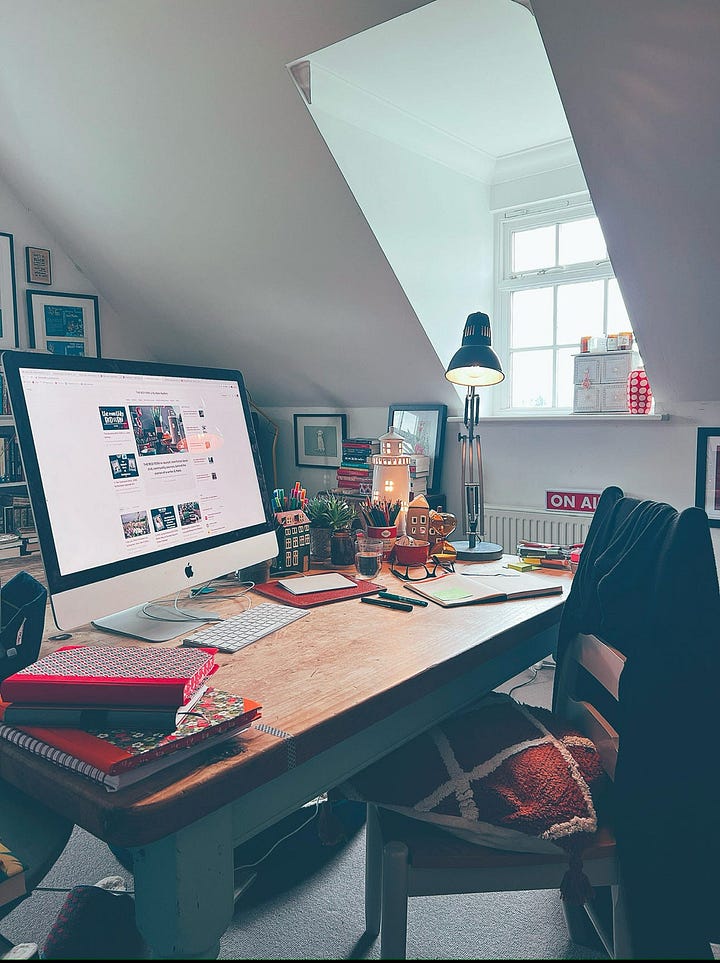
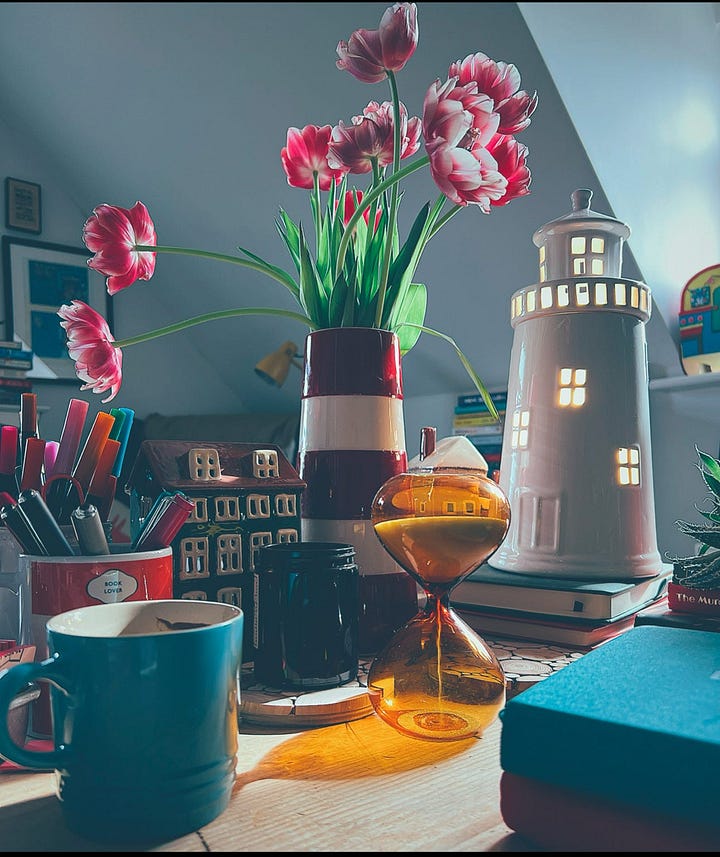
Helen’s workspace looks extremely inviting to me. A space that would call to me when I wasn’t in there!
shares her writing space with her husband (something she’d like to change 🤣) but she told me that ‘I love that I can stick up things on the walls’:This makes complete sense for writers who might be working on structure or plot, or simply needing somewhere to put reminders! I like that Amy has a whole wall for this and therefore plenty of space to move ideas around. It’s a good idea to factor in a large board or even a wall that is painted with chalkboard paint into your design.
What don’t we like about our spaces?
I asked those that contributed to tell me something they disliked about their current writing space.
, whose writing space is pictured below, said:‘This is my current writing desk in Dubai. I like that it is quiet, bright, uncomplicated. I don’t like that it doesn’t have much of my personal style - which my home in Scotland had loads of. That said I might learn from the simplicity of this space for the next time I design an office space.’ - Catriona Knapman
I like that this potential negative has been turned into a positive!
Those with an office in a garden shed or pod can sometimes experience wide fluctuations in temperature. Nikki Vallance’s colourful space is one such ‘pod’ in her garden and she explains: ‘I’d prefer if it was air-tight and air conditioned - it’s too cold in the winter and too hot in the summer!’
This is a common issue and I would say that from a designer’s perspective, it is always a good idea to try to factor heating/cooling systems carefully into your budget, even when it doesn’t seem like a very interesting way to spend your hard earned cash! Air conditioning or heating can seem expensive in the grand scheme of building a space, but you don’t want to end up with a space that you can only use during certain months of the year. Hopefully the investment will pay for itself in the amount of use the space gets over time.
Nikki - perhaps you can add some insulation and an air-con unit further down the line?
I’m very grateful to everyone who has sent me photos and shared insights into their writing spaces for this piece. It’s been so interesting to find out the varied needs and desires of writers in terms of where they write and to be reminded that there is absolutely no ‘one size fits all’ approach to designing a writing space. As always, it’s about delving into your own personality and aligning the design to what you want it to provide for you. There will always be compromises and restrictions no matter how much space we do or don’t have.
Despite all of the above, I truly believe that writers can work anywhere. When I first started writing, I didn’t have my current studio space and instead I was crammed into a corner of the spare room. It wasn’t great but it didn’t really affect my creativity or output. I still wanted to sit there and write, but I just enjoy my surroundings a little more these days.
My final mention goes to digital nomad
who told me that 90% of his writing takes place in coffee shops. I’m certain he’s not alone in that!And finally…
If you are wanting make changes to your existing writing space or planning to create one, I would love to help you with my interior designer’s hat on. I offer online consultations which will give you a plan for layout, colours, fabrics, furniture and more. I can also source blinds and curtains for you.
I’m Hannah Ashe, a multi-hyphenate based in London. I left my full-time teaching job in July 2023 to pursue a more creative approach to work. These days I earn my living from a variety of sources including interior design consultancy, music teaching (saxophone, piano, composition and theory), writing, podcasting and building this Substack. Do come and say hello in the comments!





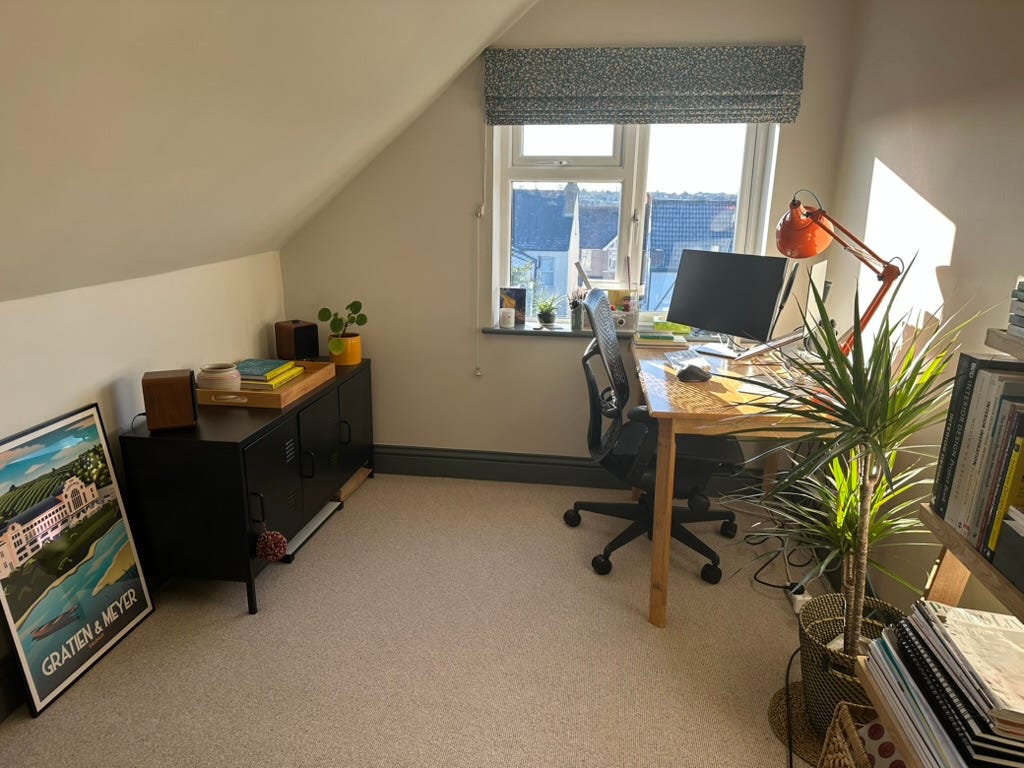
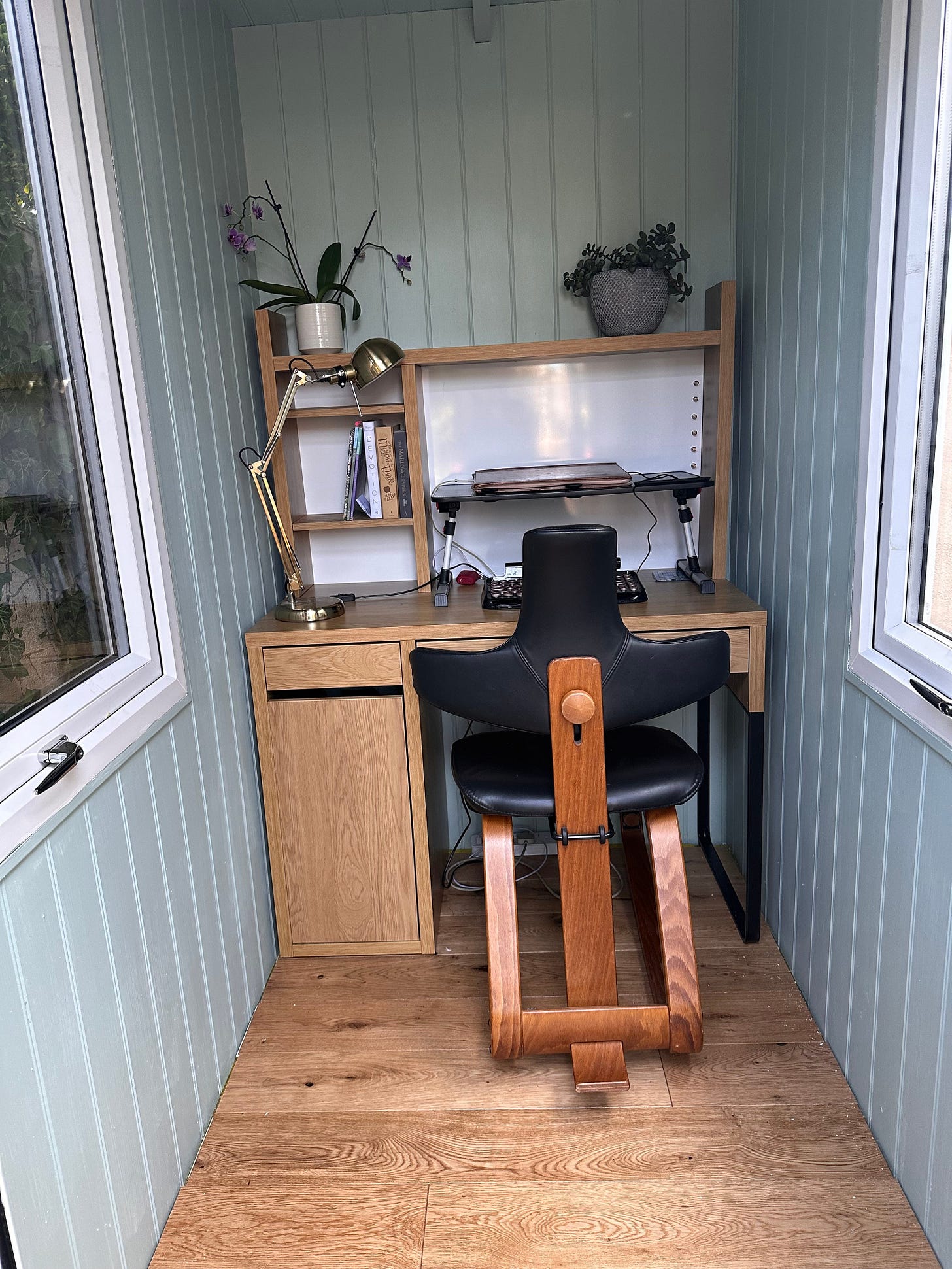
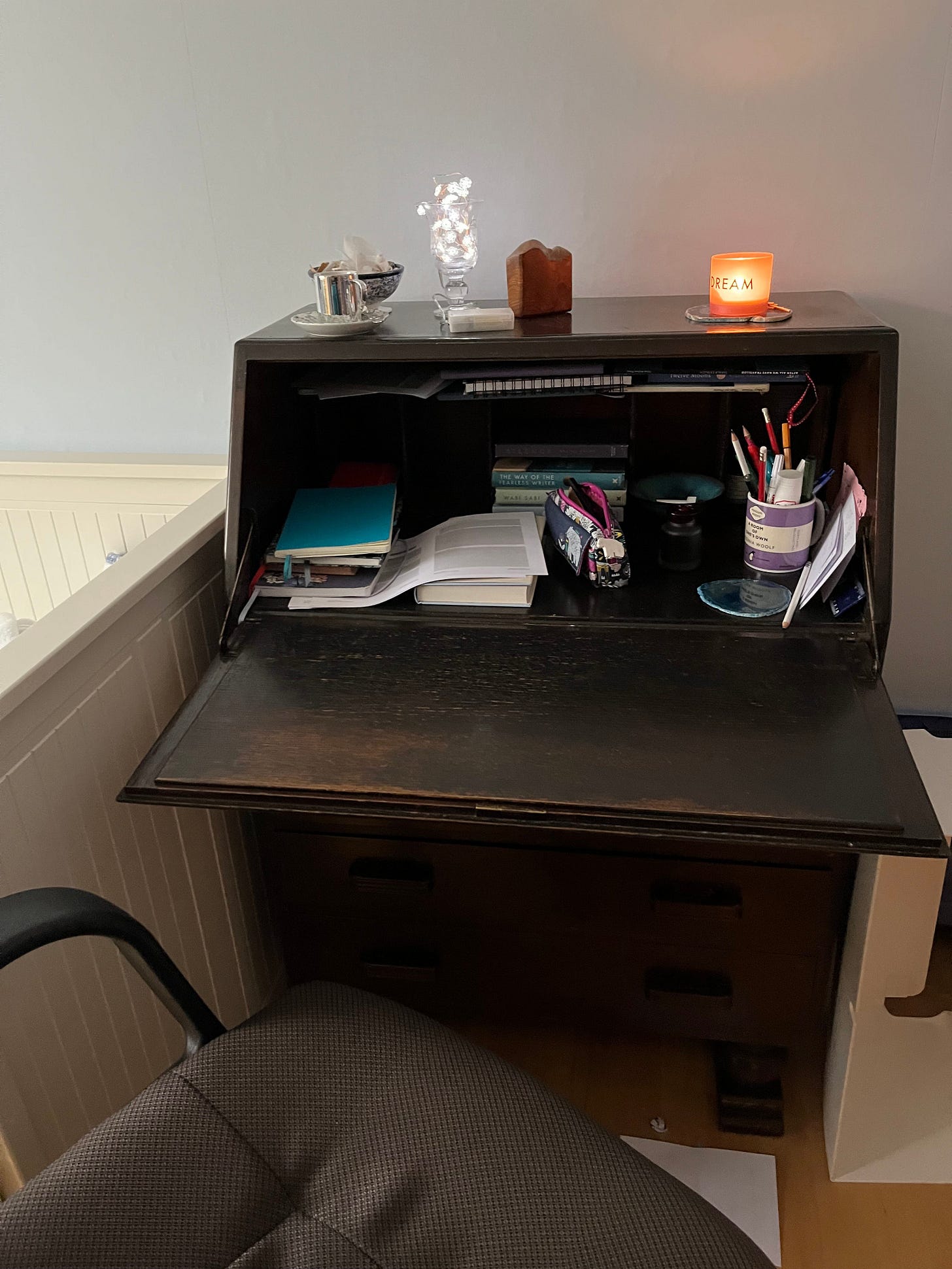
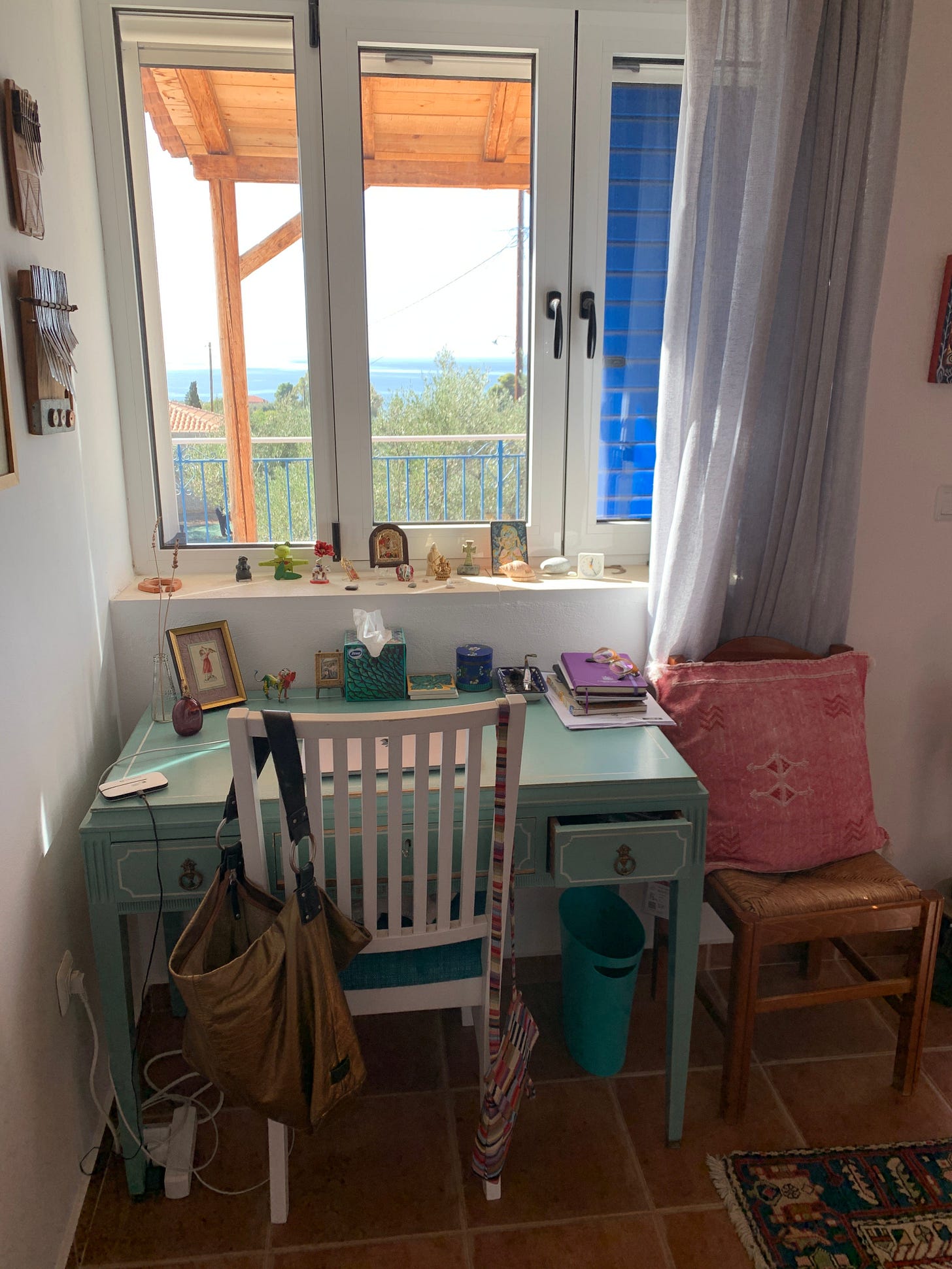
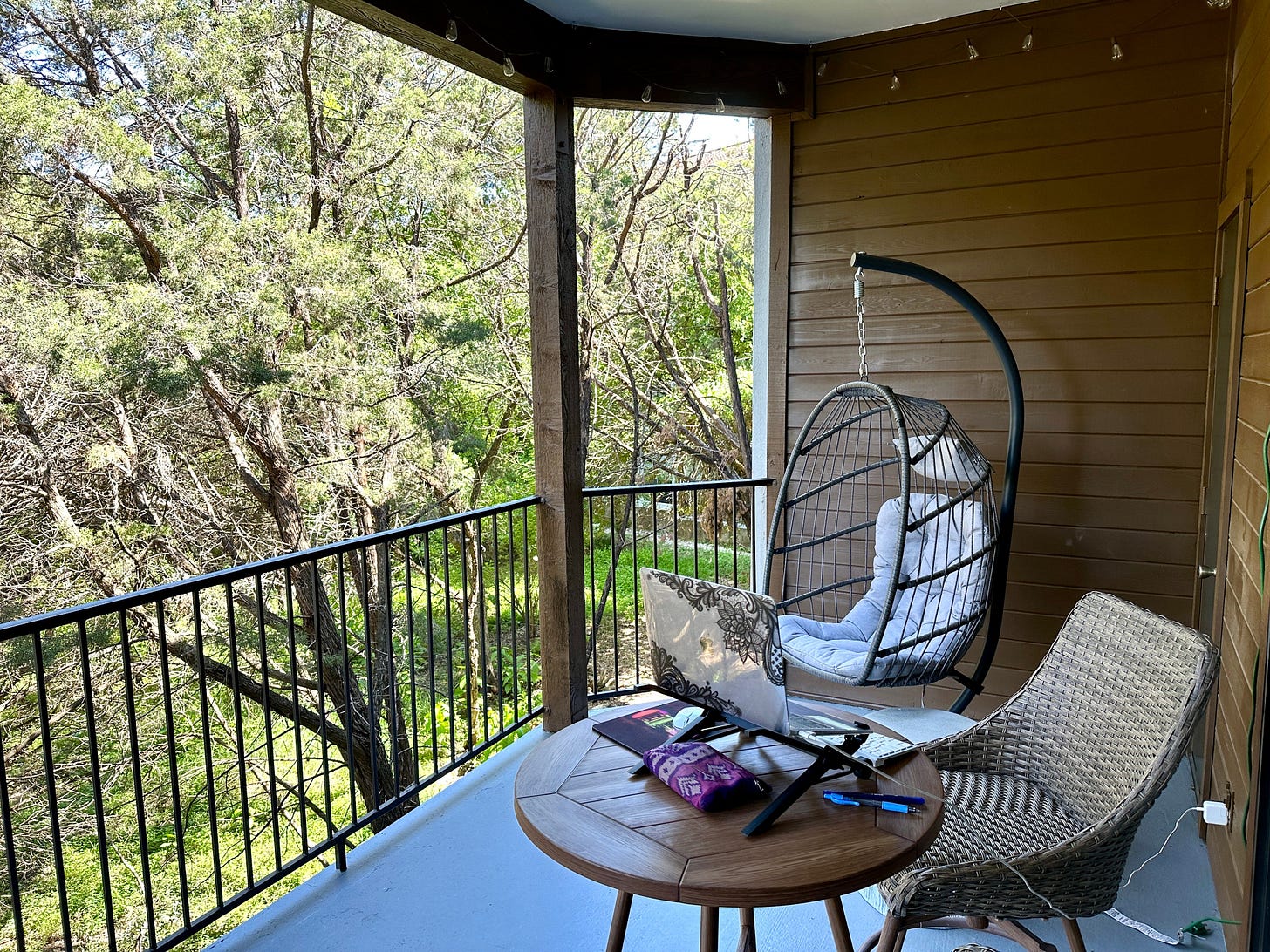
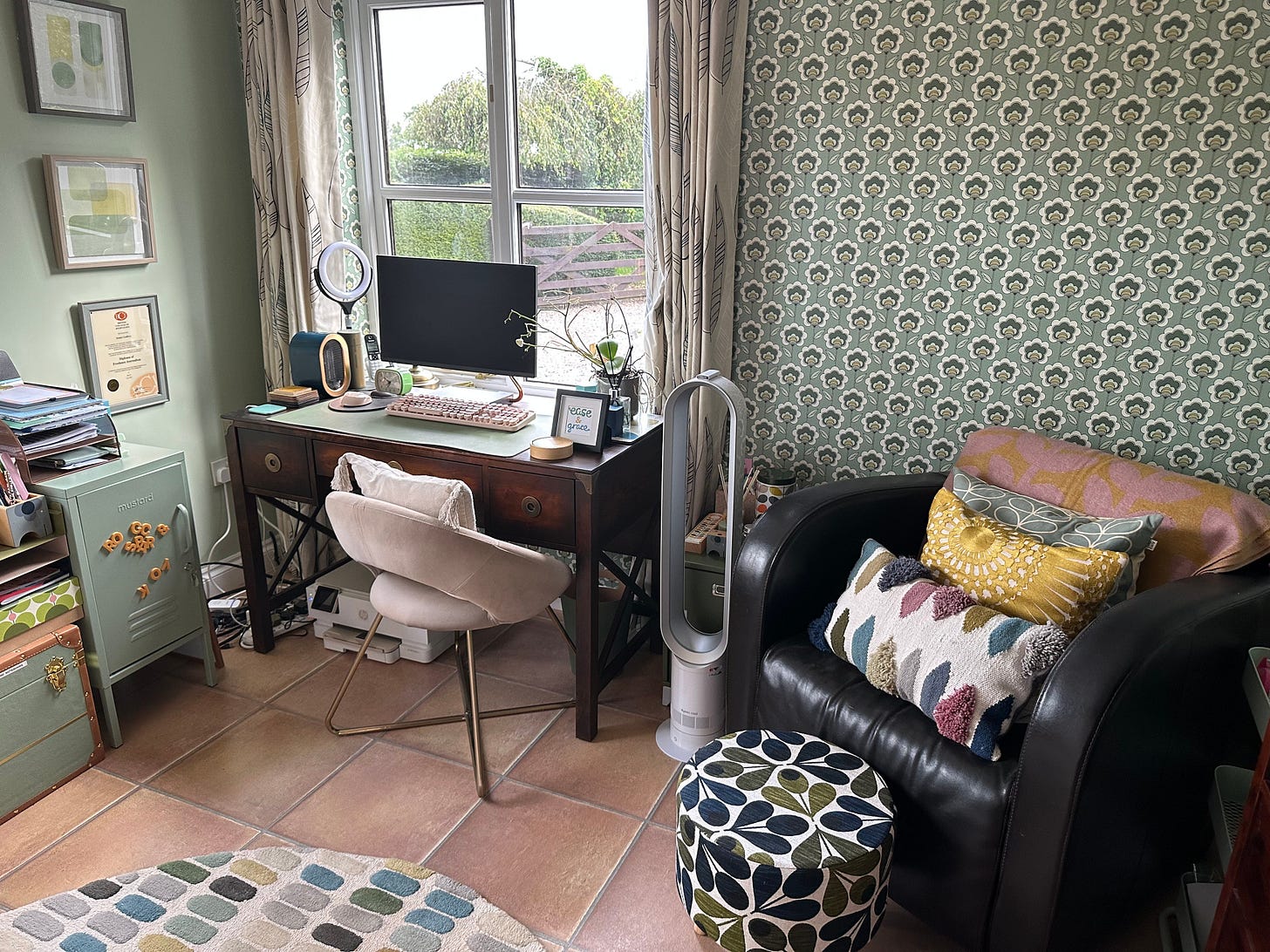
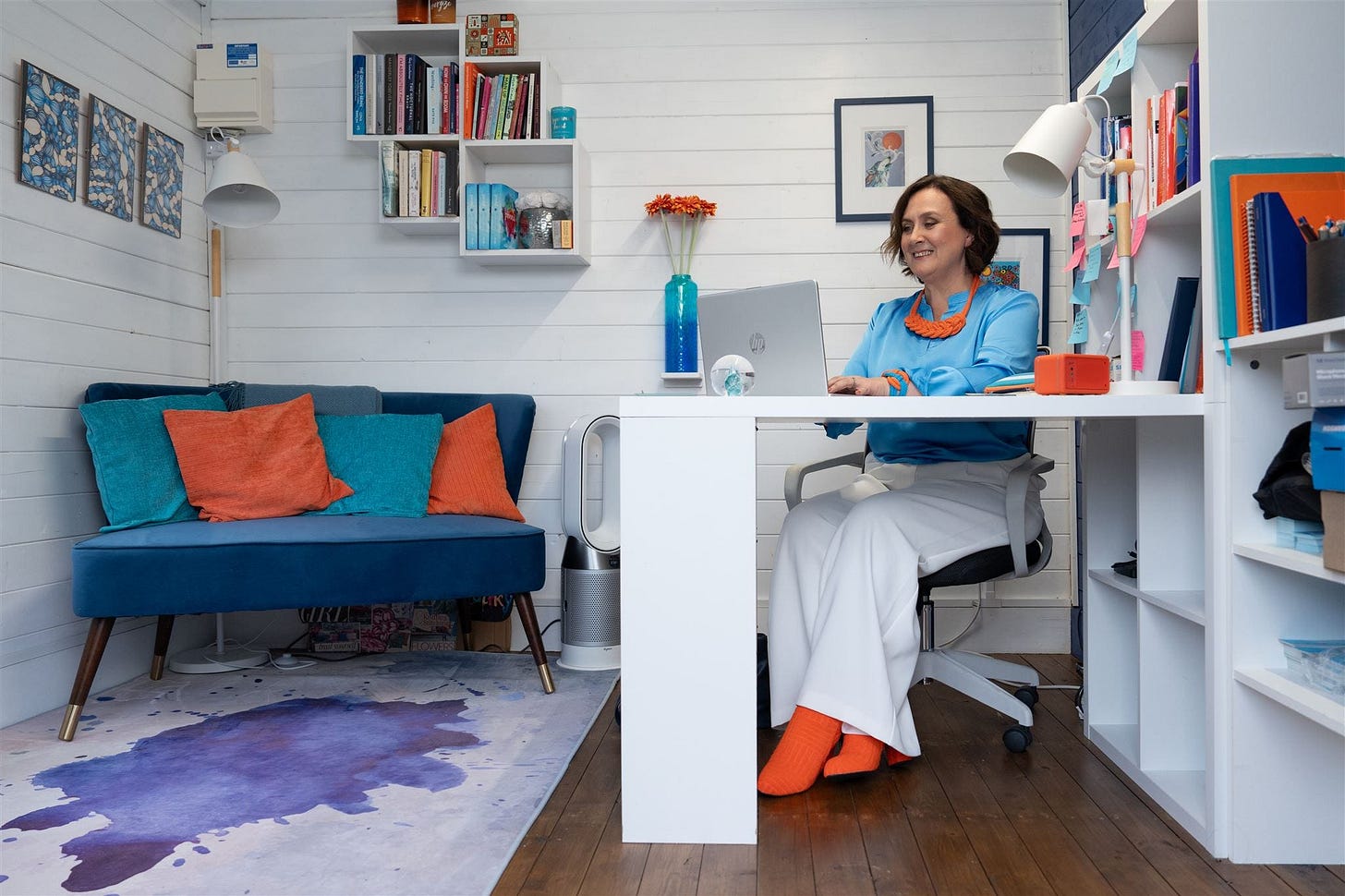
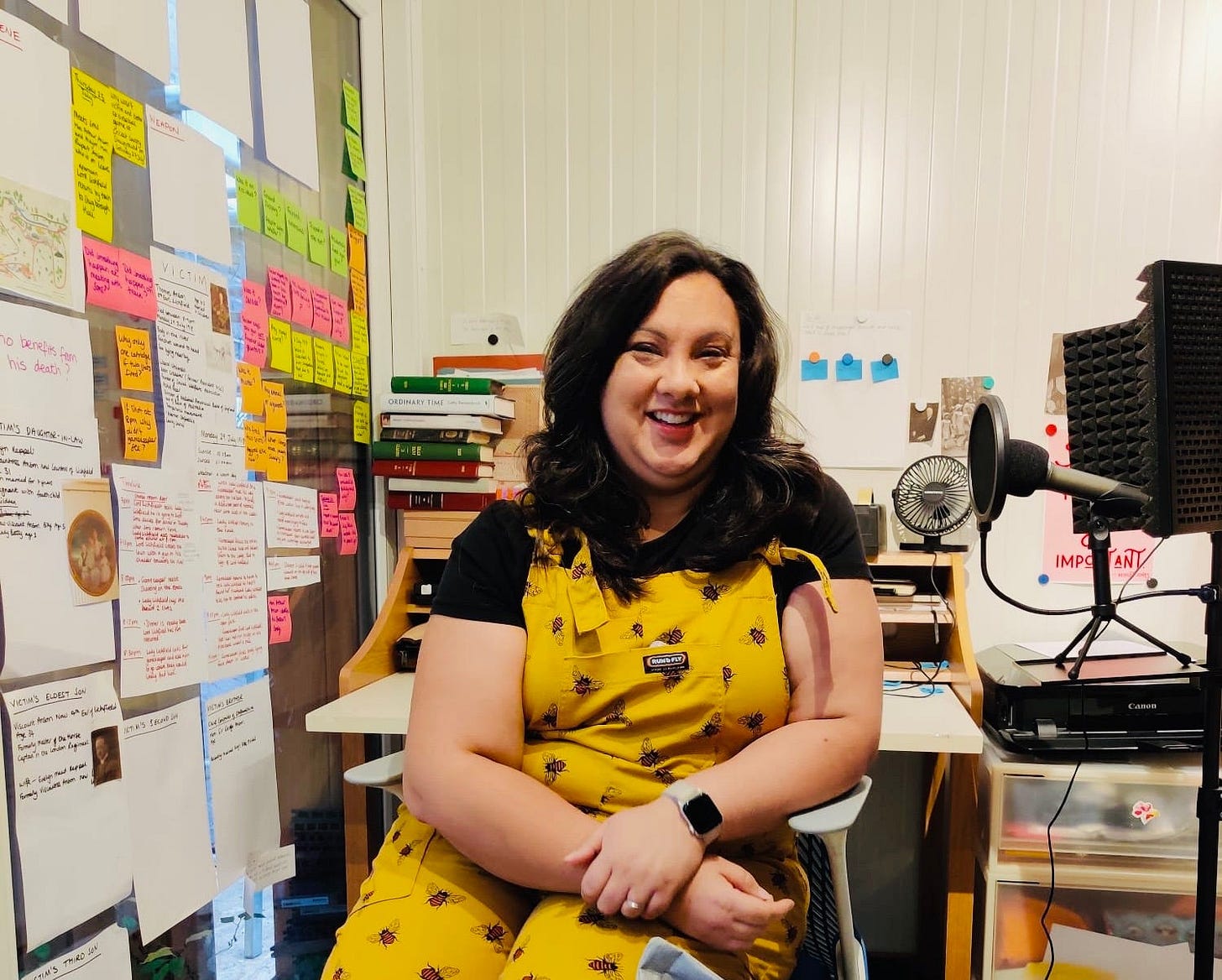
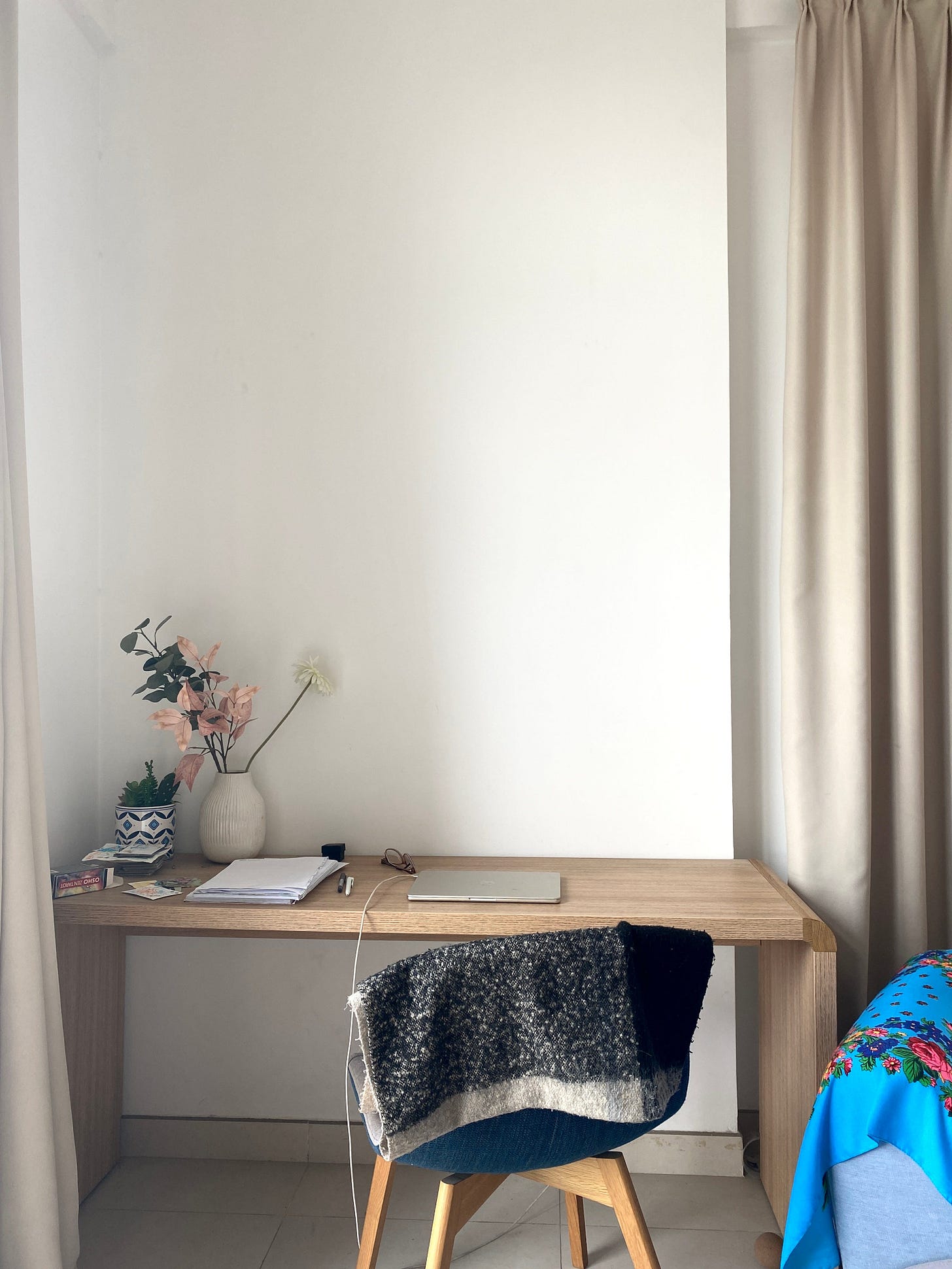
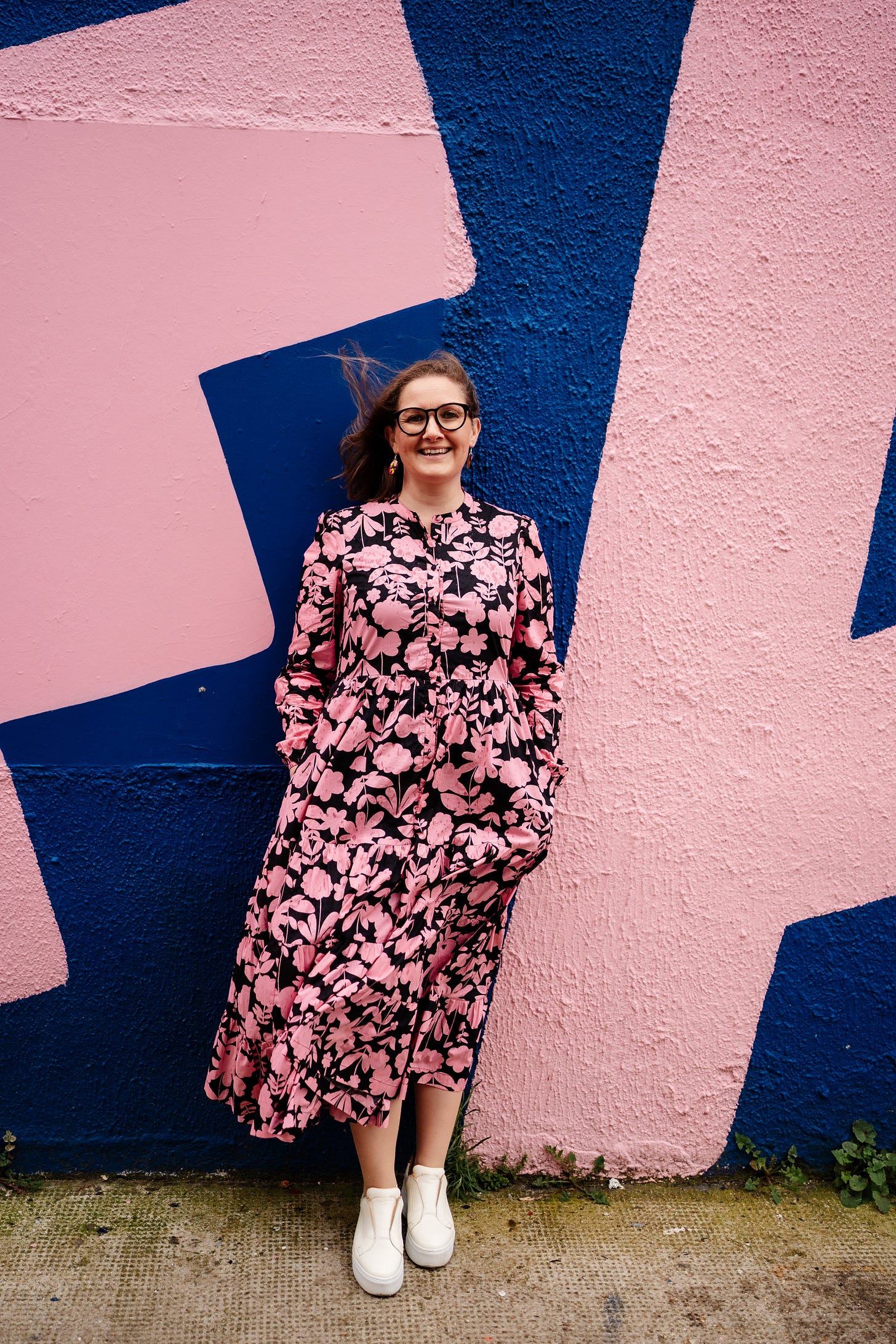
So interesting seeing others people working spaces. I absolutely love (and am very slightly envious) of Jen’s fabulous balcony space. I love working outside as soon as the weather improves.
I love everyone of these spaces. I now need to tidy mine up 😁😘